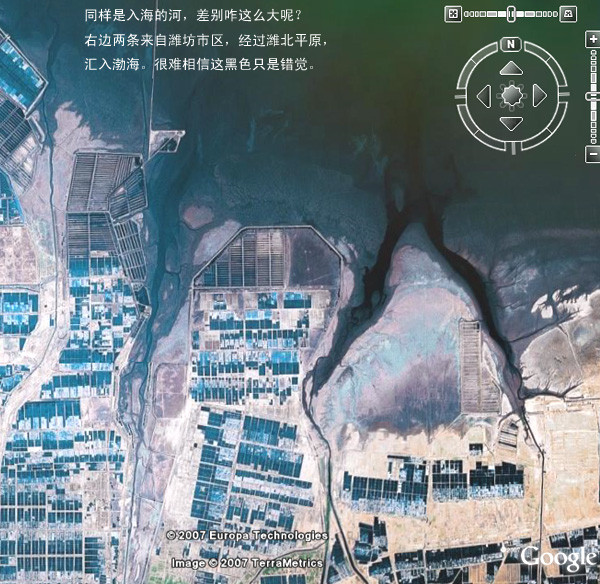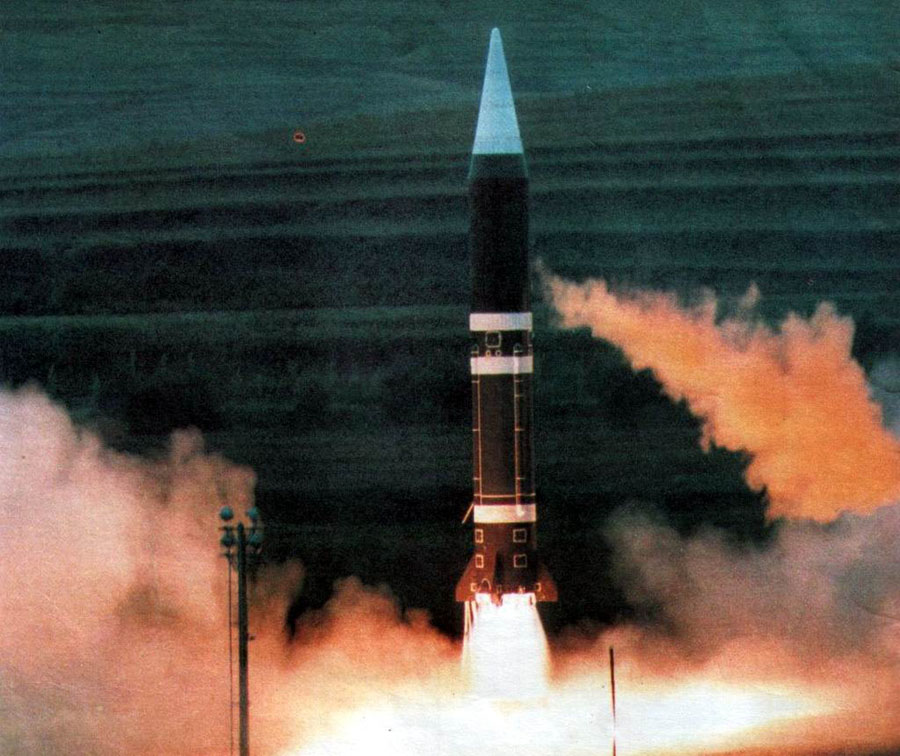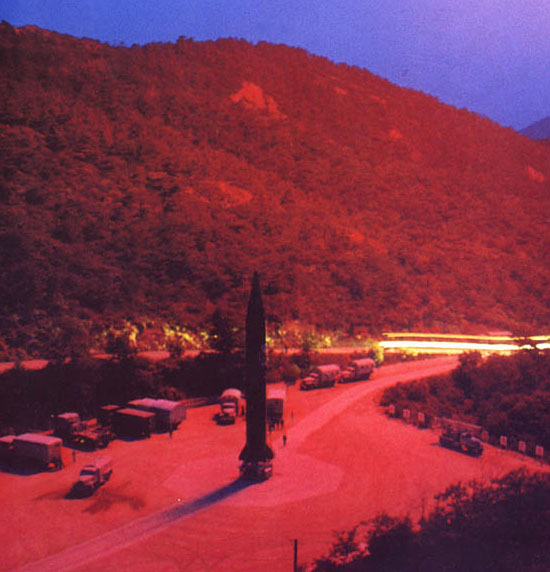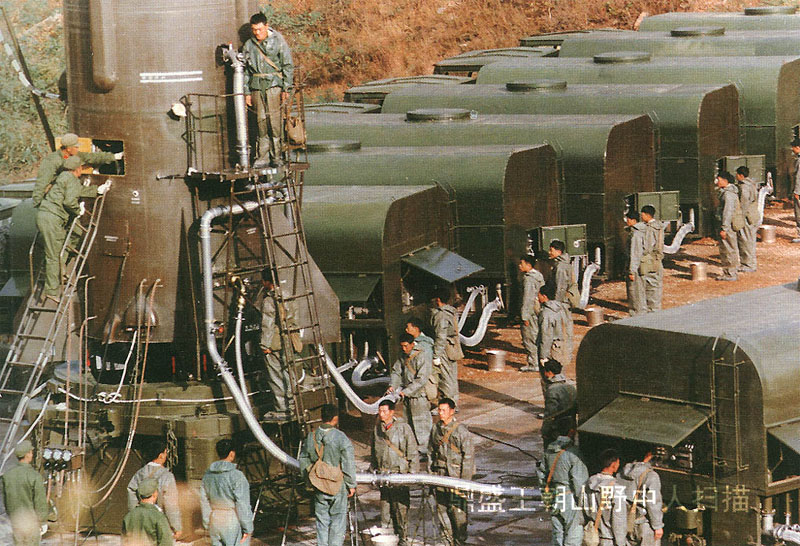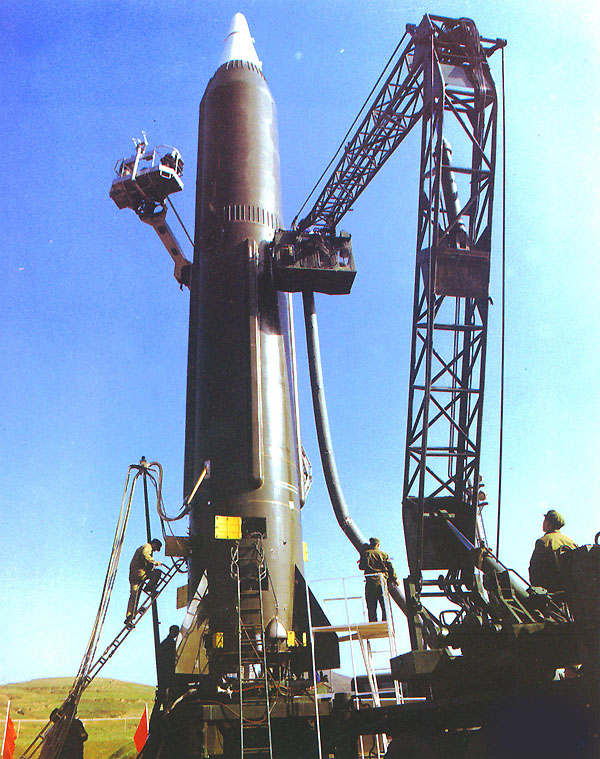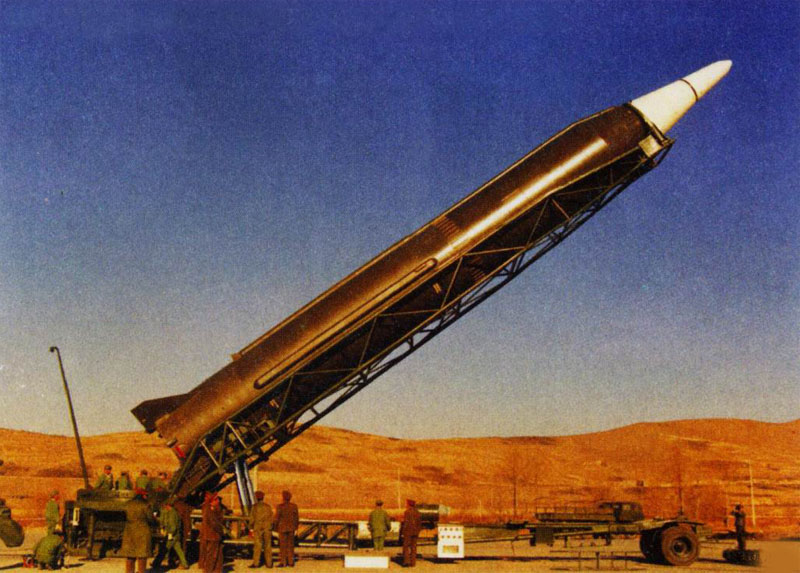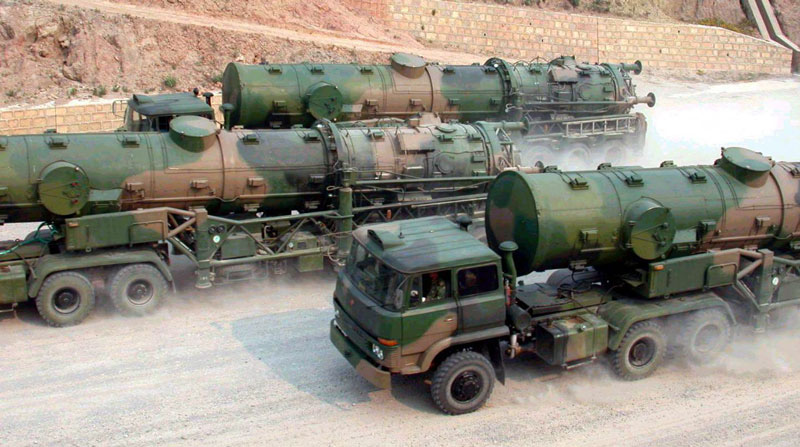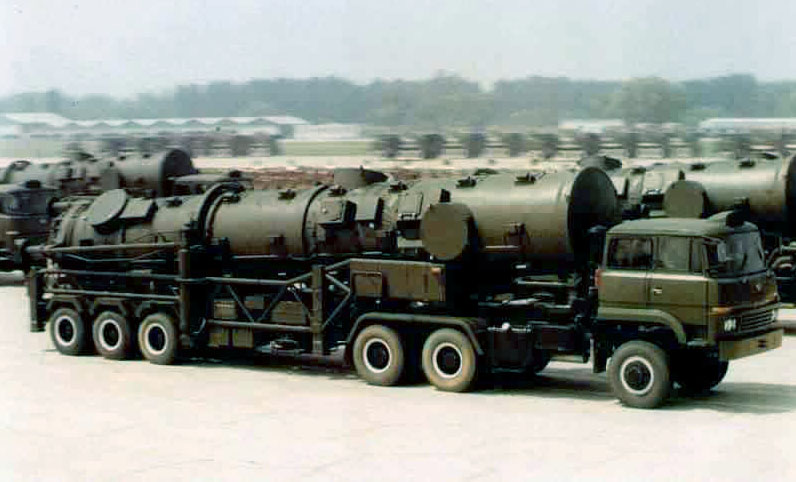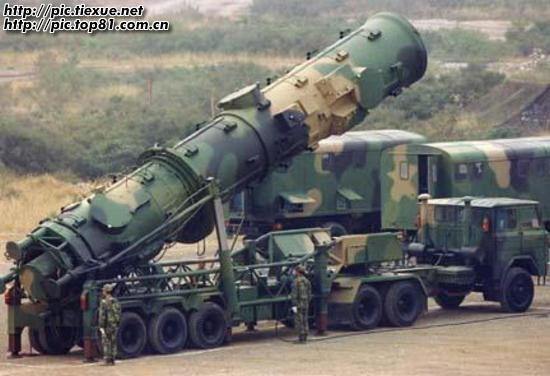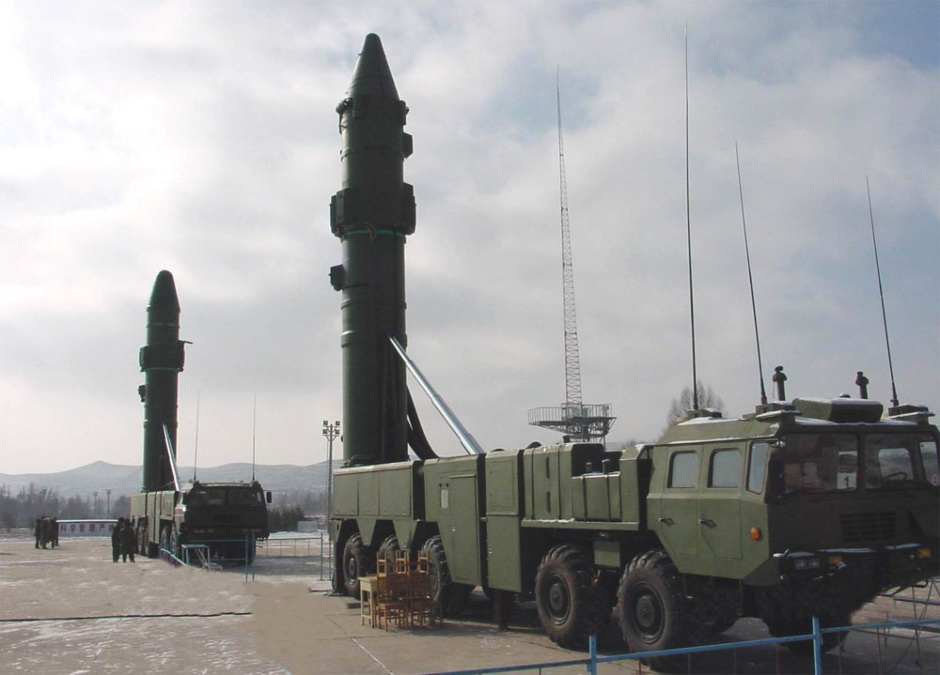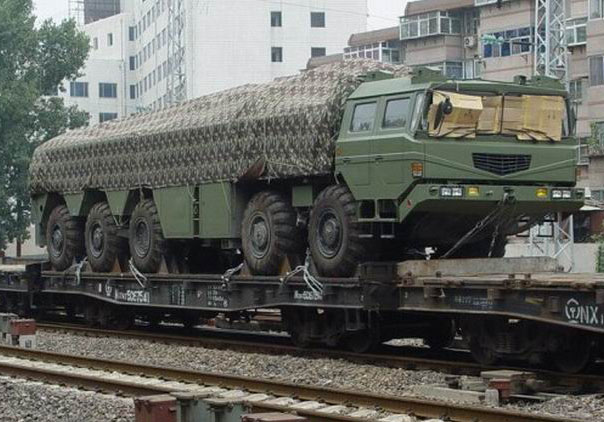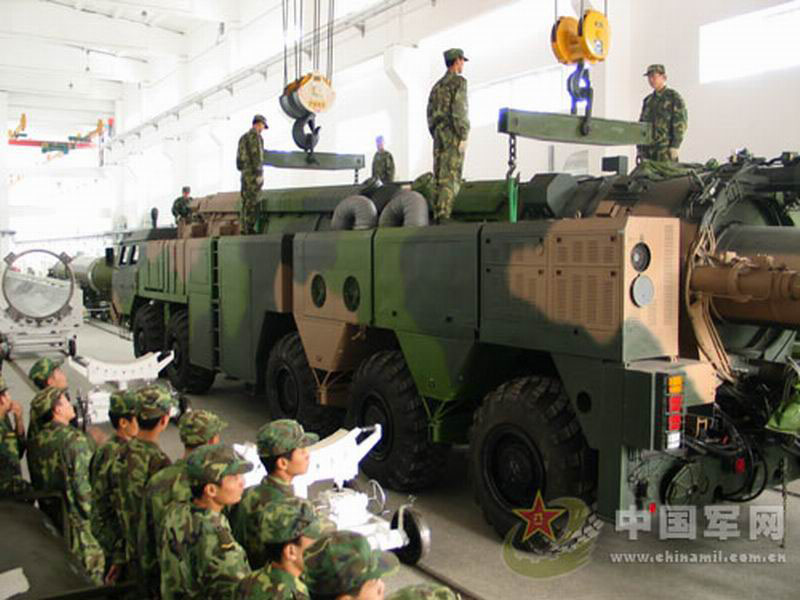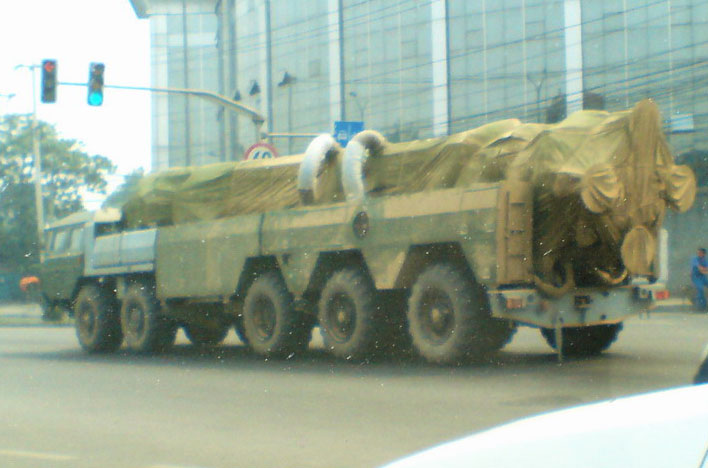중국, 산둥성 배치 미사일-공군력 대폭 증강
[뉴시스] 2008년 06월 22일(일) 오전 09:49
[서울=뉴시스]중국군은 한반도와 일본을 겨냥할 수 있는 산둥(山東)성에 중단거리 미사일 기지를 확충하고 최신 전투기를 배치하는 등 군사력을 증강하고 있는 것으로 나타났다. 캐나다 중국어 군사전문지 칸와 디펜스 리뷰(漢和防務評論) 인터넷판은 22일 중국 소식통을 인용, 중국군이 특히 일본에 대한 공격을 상정해 산동성의 미사일 전력과 공군력을 강화하고 있다고 전했다.
칸와에 따르면 중국군 제2 포병(미사일부대)이 산둥성 칭저우(靑州) 기지에 새로운 지하시설 등을 건설하는 한편 기존의 중거리 탄도 미사일 둥펑(東風) 3호(DF3 사정 2400km)의 개량형 DF3A(사정 3200km) 배치를 늘리고 있다. 고도의 정확도를 가진 DF3A는 핵과 재래식 탄두 겸용으로 사정거리를 늘려 한반도 전역은 물론 홋카이도를 비롯한 일본 열도 전역을 타격할 수 있다.
또한 최소 8개의 미사일 격납고를 보유한 칭저우 미사일 기지의 확충을 계기로 배치 미사일을 사정 2400km의 DF3에서 둥펑 21호(DF21) M/C 중거리 미사일로 교체하는 준비작업이 진행될 가능성이 높다고 칸와는 지적했다. 칸와는 이어 정찰위성이 산둥반도의 최소한 2곳에서 S300 PMU1 지대공 미사일 기지를 건설한 사실을 확인했다고 전했다.
공군도 산둥성 연안에 전진 배치를 증가시켜 지닝(濟寧) 공군 19사단 57연대에 이미 최신예 J11 전투기를 적어도 23대 배치한 것으로 위성사진을 통해 드러났다. 산둥성의 이 같은 군사력 증강에 대해 칸와는 미국과 일본에 대한 견제력을 증대시켜 대만해협 유사시 양국의 개입을 차단할 목적이 있다고 분석했다.
이재준기자 뉴시스통신사.
***********************
位於山東半島的青州第二炮兵彈道導彈基地,原來部署DF3型中程彈道導彈,射程2400公里。
산둥 반도의 두 번째 대포 qingzhou 미사일 기지, 원래 배포 df3의 범위와 매체 - 미사일 2천4백킬로미터합니다.
**********************************************
China's military build-up opposite Korea
By Andrei Chang
Column: Military Might
Published: June 20, 2008
Hong Kong, China — Although in many respects the situation in the Taiwan Strait appears to be improving, China’s military actions do not reflect this apparent trend. In fact, China has reinforced its troops on the Shandong Peninsula, opposite Korea, where they would engage U.S. and Japanese troops should they attempt to support Taiwan in the event of a confrontation.
In the past, Shandong’s Jinan Military Region was where China kept its strategic reserve force to guard against invasion by the Soviet Union. But since 1996, the region’s strategic role has changed. The ground forces of this region, with the No. 54 Group Army at their core, now include a number of fast reaction units. The navy and air force units deployed in this region have also been built up; the Strategic Nuclear Submarine Force and the Air Defense Force in Shandong have been given priority attention.
Observers have noticed lately that a large proportion of the People’s Liberation Army’s new-generation navy and air force equipment, as well as air defense systems, has been deployed on the Shandong Peninsula. The Shandong military command’s capacity for air defense operations and long-range beyond-border air strikes has been greatly enhanced.
The strategic intent behind reinforcing both the offensive and defensive postures of this command could be summarized as follows:
First of all, with two 094 SSBNs – nuclear-powered ballistic missile submarines – entering service, the overall combat strength of the No. 1 Nuclear Submarine Flotilla based in Qingdao, on the eastern Shandong Peninsula, has been greatly improved. As a consequence, there is a legitimate need to reinforce air defense and aerial interception capability in this region.
Secondly, in the event of a confrontation, the air force and navy aviation units stationed on the peninsula would coordinate with the combat operations of the PLA Navy North Sea Fleet, and play the critical role of blocking U.S. and Japanese forces heading south to the Taiwan Strait.
To implement this strategy, the PLA Air Force No. 5 Attacker Division has been armed with JH-7A fighter-bombers. This is the second JH-7A division of the Chinese Air Force after the No. 28 Attacker Division.
The airport at Weifang in central Shandong is now being drastically revamped. The No. 28 Attacker Division is armed with 24 JH-7As, and the No. 5 Attacker Division is expected to receive an equal number of JH-7As. These fighter-bombers are the latest variant, fitted with multirole pods, KD-88 long-range air-to-ground missiles and Y-91 anti-radiation missiles. With a combat radius of 1,500 kilometers (about 930 miles), the JH-7A fighter-bombers deployed on the Shandong Peninsula could theoretically cover all the U.S. military bases in Korea and the Taiwan Strait. If these fighter- bombers were all transferred to the Wendeng military airport, most of Japan’s Kyushu Island would be within their combat radius.
The JH-7A fighter-bombers of the No. 5 Attacker Division could also receive aerial support from the J-11 fighters deployed at the No. 19 Fighter Division at Jining, in southwestern Shandong. Jining has the best military airport on the peninsula, where huge underground aircraft hangars and first-line maintenance and support facilities have been completed.
By contrast, the No. 12 Fighter Division, armed with J-8II fighters, has been somewhat neglected both in terms of construction at its airport and upgrading of its equipment. In terms of combat missions assigned to the two fighter divisions in this region, the No. 12 Division would probably be responsible for territorial air defense, while the No. 19 Division would be engaged in out-line operations along with the No. 5 Attacker Division.
In line with this trend of development, as well as the experiences of the No. 2 and No. 3 Fighter Divisions, the No. 19 Fighter Division may very likely receive more advanced combat aircraft in the future.
The Navy Aviation Force No. 5 Division has also been strengthened. This division is now equipped with new-generation J-8F fighters. The electronic reconnaissance and intelligence collection capabilities of the Navy Aviation Units under the PLA Navy North Fleet have been fully enhanced over the years.
In recent years, there have been quite a number of occasions on which U.S. or Japanese fighters have intercepted Y-8 serial high-tech electronic reconnaissance and maritime patrol aircraft in the airspace above the East China Sea. The key base of the Y-8 serial reconnaissance aircraft is Laiyang, in the middle of the peninsula, the home base of the Independent Reconnaissance Regiment of the North Sea Fleet.
By extensively reinforcing the air force units stationed in Shandong, the PLA has naturally upgraded its air defense posture. The Shandong Peninsula has become another key area for the deployment of S-300 or HQ-9 surface-to-air missiles. So far, two S-300 or HQ-9 SAM positions have been located, currently under construction in Shandong. one is at a location close to Qingdao, which is obviously intended to provide protection for the headquarters of the North Sea Fleet and the No. 1 Nuclear Submarine Flotilla.
The other SAM position is located at Penglai, in northeast Shandong. It is likely that the purpose of deploying S-300s or H-Q9s in this region is to provide protection to the nuclear power stations that are now in the planning stage. Shandong is planning to construct three nuclear power stations along 120 kilometers (about 75 miles) of coastline connecting three major cities – Qindao, Yantai and Weihai.
Of course, reinforcing air defense on the Shandong Peninsula will also enhance Beijing’s air defense posture. Some of the U.S. Air Force units stationed in Korea and Japan would have to cross the Shandong Peninsula in order to attack Beijing. The above two S-300 or HQ-9 SAM positions, both currently under construction, will very likely be put into use after receiving S-300PMU2 air defense systems.
Reinforcing Shandong’s air defense will naturally give nearby Henan province an effective air defense shield as well. Henan is the key strategic base of the PLA Second Artillery Force, with the mission of exerting strategic nuclear deterrence against the United States.
Also, an unconfirmed source says that a DF-31 long-range strategic missile (ICBM) brigade of the No. 52 Group Army is based at Laiwu in central Shandong province. China’s immense efforts to reinforce Shandong’s long-range air defense system seem to have special significance.
****************************************************
MRBM (Medium-range ballistic missile)
준(準)중거리 탄도미사일
DF-3 (CSS-2) Intermediate-Range Ballistic Missile
Development History
Following the success in the DF-1 short-range and DF-2 (CSS-1) medium-range surface-to-surface ballistic missiles, the PRC began to work on the longer range DF-3 in the early 1960s. Unlike its predecessors, the new missile was not based on the Soviet R-2 short-range ballistic missile, but a brand new design with extended range to enable it to reach the U.S. military bases in Philippine.
After several rounds of evaluation, the concept of an intermediate-range ballistic missile was finalised in early 1964. It was decided that the missile would use storable liquid-fuel rocket to simplify the pre-launch preparation, and a cascade compensation inertial guidance system to improve the missile’s accuracy. The missile’s launch and support equipments were all capable of road-mobile in order to achieve limited mobile launch capability.
DF-3 launch (Chinese Internet)
The project entered full-scale development in 1964. The first flight test of the missile was carried out in December 1966, but was only partially successful due to problems with the rocket engine. A second test in January 1967 also experienced similar problems. After some modification on the missile’s rocket engine, the third flight test in May 1967 was fully successful. In 1971, the missile entered operational service with the PLA Second Artillery Corps using the designation DF-3.
Most DF-3 missiles in the PLA service received life extension refit in the early 1980s. At the same time, the PRC began to develop an improved variant DF-3A, with its range extended from 2,500km to 2,800km. The longer range was achieved by using an optimised propellant, without requiring changes on the missile’s aerodynamic layout. The first two flight tests of the DF-3A in the early 1980s both failed due to engine failure, but the next two tests in December 1985 and January 1986 were both successful.
A conventional high-explosive warhead variant of the DF-3A was developed for an export order to Saudi Arabia in 1987. About 36~60 missiles were reportedly delivered, though no known test launch has ever been made in the country. It is believed that these missiles are no longer operational.
Operational Status
The DF-3 entered operational service in 1970, with about 150~200 missiles reportedly deployed. A further 50~100 DF-3A missiles have been deployed since the late 1980s, including 60~120 conventionally-armed DF-3As for Saudi Arabia. Since the late 1990s, the PLA began to gradually phase out some its DF-3s and replace them with the more capable DF-21.
The DF-3 is road-mobile on a four-wheel carriage towed by 8X8 trucks, and is launched from a pre-surveyed launch spot located near its base. Possible DF-3 bases include Dalong, Datong, Dengshahe, Dienwei, Fungrun, Jianshui, Kunming, Lianxiwang, Liujikou, Tonghua, Wuwei, Xian and Yidu. The DF-3 training facility is located in Wuwei, Gansu Province.
Although the 2,500-km range DF-3 was mainly intended to cover the U.S. military assets located in Japan and Philippine, it has also been deployed in the west part of the country to aim at targets within neighbouring countries in Central and South Asia.
A DF-3 launch unit (Chinese Internet)
A DF-3 launch spot (Chinese Internet)
Design
The DF-3 is a single-stage, single-warhead IRBM system, with a maximum range of 2,500km (2,800km for DF-3A). However, if the payload were reduced, the DF-3A version would have the capability to achieve a range of about 4,000km. Alternatively, the missile could fly at a depressed trajectory for a range of 1,550km. The missile uses storable liquid propellants, and the pre-launch preparation time is reported to be between 2 and 3 hours.
The DF-3 uses vanes in the efflux nozzles for control during the boost phase of flight. The motor consists of a cluster of four YF-2 engines which use storable liquids, Unsymmetrical Dimethyl Hydrazine (UDMH) fuel and AK-27 oxidiser (nitric acid with 27% nitrogen tetroxide), and provide a total thrust of 96 tonnes. The motors have a burn time of around 140 seconds. This gives the DF-3 missile a minimum range of 750km and a maximum range of 2,650km. At maximum range, the peak velocity of DF-3 will be 4.7km/s. DF-3 has a separating warhead assembly, weighing 2,150kg.
The missile is fitted with an inertial guidance, with an estimated CEP of 1,000~4,000m. The missile normally carries a 2,000~3,000kT yield nuclear warhead, but can also configured to carry a conventional HE warhead. The improved DF-3A version has an accuracy improved to 1,000m CEP.
Erecting the missile (Chinese Internet)
Fuelling operation (Chinese Internet)
Pre-launch preparation and fuelling (Chinese Internet)
Specifications
Configuration: Single-stage liquid
Length: 21.2m
Diameter: 2.25m
Launch Weight: 64,000kg
Propellant: Liquid fuel (Unsymmetrical Dimethylhydrazine/Nitrogen Tetroxide mix [UDMH/N2H4])
Guidance: Inertial
Range: 2,500km (DF-3); 2,800km (DF-3A)
Deployment: Launch pad + road mobile
Re-entry Vehicle Mass: 2,150kg
Warhead: Single 1,000~3,000kT
CEP: 2,000~3,000m (DF-3); 1,000m (DF-3A)
Launch Preparation Time: 120~180 min
********************************************************
DF-21 (CSS-5) Medium-Range Ballistic Missile
The road-mobile DF-21 MRBM system (Chinese Internet)
The DF-21 (NATO code name: CSS-5) is a two-stage, solid-propellant,
single-warhead medium-range ballistic missile (MRBM) system developed by China Changfeng Mechanics and Electronics Technology Academy (also known as 2nd Space Academy). The missile design is based on the two-stage JL-1 submarine-launched ballistic missile (SLBM). The DF-21 is capable of delivering a 500kT nuclear warhead over a distance of 1,800km. The improved DF-21A was reportedly introduced in 1996.
In March 1967 the Commission of Science, Technology, and Industry for National Defence (COSTIND) decided to develop a land-based solid-propellant strategic ballistic missile. However, due to the impact of the Culture Revolution, the missile development did not start until August 1978.
In 1979 the solid-propellant ballistic missile design team, which was also in charge of the JL-1 submarine-launched ballistic missile (SLBM) development, was subordinated to 2nd Aerospace Academy, with Huang Wei-Lu appointed as the chief designer. The proposal to develop the DF-21 land-based medium-range ballistic missile (MRBM) based on the JL-1 SLBM design and technology was finally approved by the PLA in June 1980.
DF-21 in the 1999 national day parade (Chinese Internet)
As well as the development of the ballistic missile, 2nd Aerospace Academy was also responsible for developing the transporter-erector-launcher (TEL) vehicle, missile canister, missile testing and aiming, and other launch and ground support systems. These systems had received rigid tests in various environment and weather conditions in 1984.
The first test launch of the DF-21 missile took place in May 1985, followed by a second test launch using modified ground support system in May 1987. The missile entered operational service in the late 1980s. In the mid-1990s, 2nd Aerospace Academy also introduced the improved DF-21A (CSS-5 Mod 2) with increased range and accuracy.
The DF-21 is a two-stage, solid-fuel, single-warhead medium-range ballistic missile system designed to provide target coverage in Asia and West Pacific regions. No detailed information is available regarding the missile’s performance or design, but it is estimated that the DF-21 might be similar to the JL-1 SLBM in general aerodynamic layout. The missile might uses nozzle controls with no stabilising fins.
The missile uses an inertial guidance, coupled to a terminal radar-guidance system to increase the accuracy. The missile’s CEP is estimated to be about 300~400m. The missile carries a single 100kT, 200kT, or 500kT nuclear warhead, but can also configured to carry conventional HE warheads.
The missile is contained in an alumni-alloy cylinder launch–tube which keeps the missile in an invariable temperature environment. The launch tubes have an elevation range of 0 to 90 degrees. The azimuth range is from -180 to +180 degrees. The missile launch-tube is carried on a 3-axes semi-trailer TEL, which is towed by a HY473 6X6 tractor truck. The TEL trailer and tractor are equipped with hydraulically operated stabilisers which are lowered in preparation for the missile launch.
Operational Deployment
It is estimated that so far around 40~ 50 DF-21 missiles and 30~40 launcher systems may have been deployed by the PLA Second Artillery Corps in 4 locations:
Tonghua, Liaoning Province, near Korea Peninsula, Japan and the Far East Russia
Liangxiwang, Jiangxi Province, near Taiwan Strait
Jianshui, Yunnan Province, near South-East Asia
Xining, Qinghai Province, near China-India border and Middle Asia
These missiles are generally deployed in areas closer to China’s borders to ensure adequate target overage of areas previously covered by the DF-3 IRBM, which has a longer range, but is less accurate compared to DF-21. Many reports claimed that some DF-21 missiles are fitted with conventional warheads but this cannot be confirmed. The total number of DF-21 in deployment may not increase significantly in the future since the PLA has already deployed enough number of DF-11 and DF-15 theatre missiles for potential regional wars.
Operational DF-21 unit(Chinese Internet)
Specifications
Configuration: Two-stage
Length: 10.7m
Diameter: 1.4m
Launch weight: 14,700kg
Propellant: Solid fuel
Guidance: Inertial + terminal radar guidance
Range: 1,770km
Deployment: Road mobile, 6X6 tractor truck + 6-wheel trailer; or silo
Re-entry vehicle mass: 600kg
Warhead: Single 500 yield kT nuclear
Accuracy: CEP 300~400m
Launch preparation time: N/A
************************************************
NEW MISSILE
Conventional Medium-Range Ballistic Missile
Last updated: 2 May 2008
The PLA Second Artillery Corps began to deploy a new type conventionally-armed, solid-propellant, mobile-launch medium-range ballistic missile (MRBM) in 2004~05. Carried and launched from a wheeled 10X10 transporter-erector-launcher (TEL) vehicle, the missile is believed to be capable of delivering a single and multiple conventional warheads weighting 2,000kg and have a maximum range of 1,700km.
An sketchy image of the new MRBM was first published anonymously on the Chinese Internet in November 2006, followed by a high-resolution photo showing two missiles with different warhead configurations published anonymously in July 2007. The PLA Daily website has also published a photo showing PLA Second Artillery Corps soldiers loading a missile onto a TEL vehicle exactly identical to that shown in previous photos, indicating that the missile system was already in operational use.
Two new MRBM systems with different warhead configurations (Chinese Internet)
The exact designation of the missile is unknown. Some reports suggested that the missile might be the DF-25, a conventionally-armed MRBM developed in the late 1980s for export. With no further information on the missile emerging, Western intelligence concluded that the development was cancelled in 1996. However, the project may have been secretly kept alive and the missile was later adopted by the PLA for conventional roles. It is worth noting that this theory was not supported by the latest Pentagon report to the U.S. Congress on the PRC military power published in March 2008, with no mentioning of DF-25’s existence in the report.
A second theory is that the missile was an improved conventional version of the nuclear-armed DF-21 MRAM, possibly with a designation DF-21C. The two missiles share a similar range (~1,700km), but the DF-21 only has a payload of 600kg, compared to the 2,000kg payload of the DF-25. The two systems bear no resemblance in appearance. Finally, some suggested that the missile was a totally new design derived by removing the third-stage from the three-stage DF-31 ICBM and substituting a modified second stage.
Although the idea of using conventionally-armed ballistic missiles for tactical and strategic roles had been raised since the 1970s, the PRC had no conventional ballistic missile capability until the Second Artillery Corps added conventional strikes to its missions in the early 1990s. At the time of 1996 Taiwan Strait crisis, the PLA Second Artillery Corps had only deployed 30~50 short-range ballistic missiles (SRBM), but this number had increased to nearly 800 by 2007. The PRC Government outlined in its white paper China’s National Defence in 2006 that “the Second Artillery Force is striving to build a streamlined and effective strategic force with both nuclear and conventional capabilities”.
The 1980s conflicts with Vietnam over the sovereign of the disputed Nansha (Spratly) Islands in the South China Sea made PRC military planners realise that the PLA was incapable of operating far from the country’s coasts due to its lack of long-range strike aircraft, aerial tanker, and aircraft carrier. However, this deficiency could be partially offset by short- to medium-range ballistic missiles, which could provide an ability to deliver conventional firepower quickly over extended distances.
Transported by railway (Chinese Internet)
Loading missile onto the TEL vehicle (PLA Daily)
Design
The new MRBM was the second solid-propellant MRBM deployed by the PLA, after the DF-21 that entered service in the late 1980s. The missile is mounted on a WS2500 wheeled 10X10 TEL vehicle, with a maximum load capacity of 28 tonnes. Reportedly developed under the assistance of Belarus and resembling the Russian MAZ543 missile TEL vehicle, the WS2500 shows strong off-road travelling ability.
The missile is placed inside a cylinder-shape container/launcher, with its nose extending outside of the launcher. The missile container/launcher is in horizontal position when in travelling and vertical position during launch. At the bottom of the container/launcher there are four large hydraulically operated stabilisers, which are lowered in preparation for the missile launch.
It is now known that type of warheads the new MRBM is carrying, but it can be assumed that the possible options for the warhead may include high-explosive (HE), anti-armour submunitions, fuel air explosive (FAE), and electromagnetic pulse (EMP). Like the DF-11 and DF-15 SRBMs, the new MRBM is likely to be equipped with a combined inertial/GPS guidance system, possibly coupled with terminal guidance for increased accuracy.
The TEL vehicle spotted on the road (Chinese Internet)
****************************************************
'대륙부' 카테고리의 다른 글
| 중국군 현대화, 미국의 타이완 개입 저지 위한 것 (0) | 2008.06.26 |
|---|---|
| 美 등 전세계 전산망, 중국군 사이버공격 받아 (0) | 2008.06.26 |
| 中, 5천500년前 女神두상 사람얼굴로 복원 (0) | 2008.06.20 |
| CHINA 현재 및 2020 예상 해군력 (0) | 2008.06.16 |
| 지진이 종교 키워, 中 공산당 전전긍긍 (0) | 2008.06.10 |
